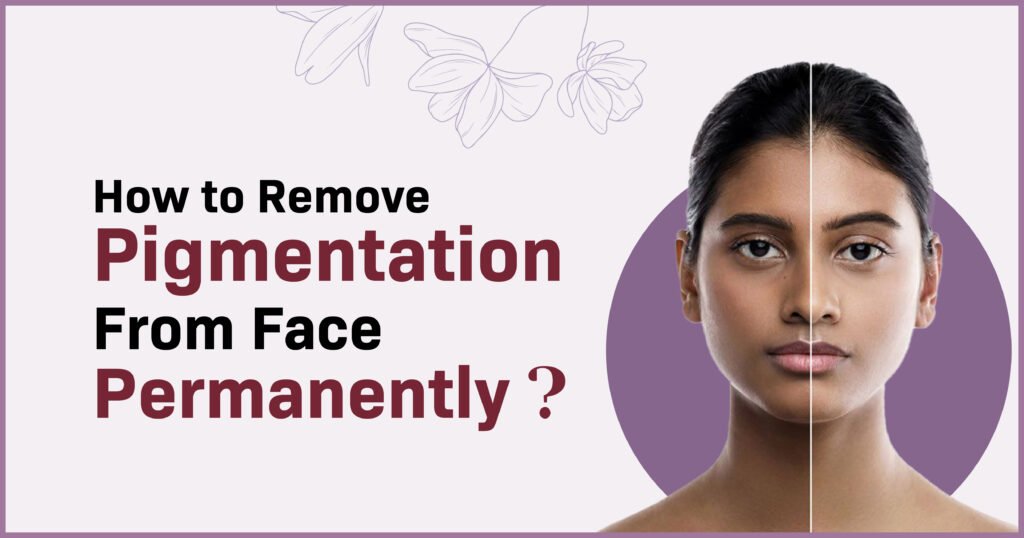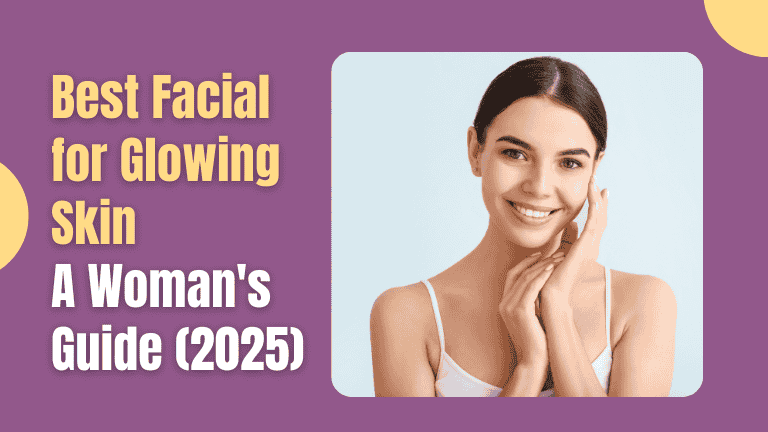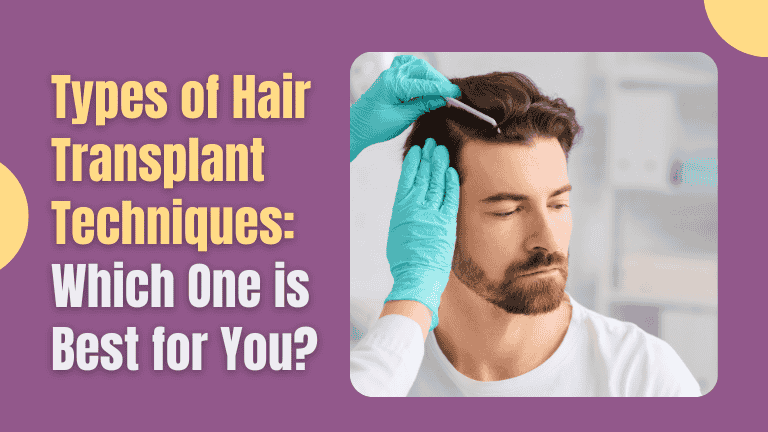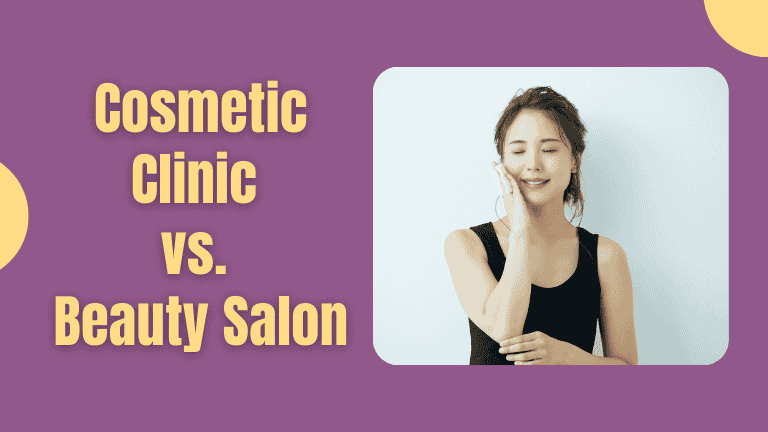Facial pigmentation arises from excess melanin production in skin cells. It often manifests as melasma, sun spots, or PIH. Treatments range from topical creams to laser therapies. Hydroquinone remains the gold standard for lightening dark patches. Vitamin C and antioxidants boost depigmentation effects. Home remedies—like tomato extracts—show modest benefits in trials. Daily sunscreen (SPF 50+) prevents new pigmentation and recurrence. Diets rich in flavonoids and omega‑3s support even skin tone. Preventive measures and gentle skincare reduce relapse rates. Finally, choosing a certified cosmetic clinic ensures safe, lasting results.
1. What Is Facial Pigmentation?
Hyperpigmentation describes darkened skin patches. Excess melanin causes these discolorations. It affects small facial areas or wide regions. It is not life‑threatening or contagious. Yet it impacts self‑esteem greatly.
Melasma is a common facial pigmentation type. It appears as brownish facial patches. It affects women more frequently. Hormones often trigger its onset. Sun exposure worsens melasma significantly.
2. Causes of Pigmentation on the Face
Sunlight triggers melanocytes to overproduce pigment. UV exposure alone can cause sun spots. Hormonal changes drive melasma in pregnancy. Certain drugs like contraceptives provoke pigmentation. Inflammation from acne can leave PIH marks. Genetics also influence melanin levels significantly.
3. Medical Treatments (Laser, Peels, Microdermabrasion)
Laser therapy targets pigment granules precisely. Studies show 532 nm and 755 nm lasers are equal. Side effects include redness and slight swelling. Chemical peels remove damaged skin layers. Superficial peels (glycolic) give faster results. Microdermabrasion smooths skin and lifts pigment.
4. Top Prescription Creams & Their Efficacy
Hydroquinone (2–4%) is gold standard. It inhibits tyrosinase enzyme and fades spots. Retinoids promote cell turnover effectively. Corticosteroids reduce inflammation and pigmentation. Kojic acid creams show slower improvements. Combination formulas yield best outcomes overall.
5. Vitamins and Antioxidants That Help
Pelvic floor physical therapy (PFPT) treats UI by enhancing muscle strength and coordination .Therapists assess posture, gait, and internal muscle function before designing a plan. Treatment may include manual techniques, biofeedback, and targeted exercises. Vaginal dilators help relax and stretch tight pelvic muscles when needed. Home exercise plans reinforce office sessions for consistent progress Electrical stimulation can supplement training for severe muscle weakness.
Studies show PFPT yields significant improvements in both stress and urge UI. Typical programs run for eight to twelve weekly sessions. Many women regain full bladder control within four to six weeks. PFPT carries minimal risk and avoids surgery for suitable candidates. It also supports post-surgical rehabilitation when combined with procedures. Patient adherence to home regimens predicts long-term success.
6. Home Remedies with Proven Results
Tomato extracts contain lycopene antioxidant. Trials show improved pigmentation when applied topically. Aloe vera soothes inflammation and fades PIH. Licorice root extract blocks tyrosinase enzyme. Turmeric paste offers mild brightening effect. These remedies work best as adjuncts.
7. Sunscreen: The Must‑Have Daily Defense
Daily sunscreen prevents UV‑induced pigmentation. SPF 50+ blocks UVA and UVB rays effectively. Reapply every two hours outdoors. Physical sunscreens suit sensitive skin. Chemical filters offer cosmetically elegant finishes. Broad‑spectrum coverage is non‑negotiable.
8. Diet, Lifestyle & Supplements
Flavonoid‑rich diets reduce hyperpigmentation risk. Berries and citrus improve skin health. Omega‑3 fats decrease inflammation responses.
Hydration supports optimal skin turnover. Avoid high‑glycemic foods to limit breakouts. Probiotic intake may modulate pigment pathways.
9. Maintenance: Preventing Pigmentation Recurrence
Gentle skincare avoids micro‑trauma and PIH. Avoid picking at acne or lesions.
Continue depigmenting creams monthly. Seasonal laser touch‑ups sustain results. Strict photoprotection prevents relapse. Annual dermatology check‑ups catch early spots.
10. Choosing the Right Clinic & Doctor
Verify clinic certifications and licenses. Check dermatologist’s experience in pigmentation.Read patient testimonials for real results. Assess clinic hygiene and equipment quality. Ensure transparent pricing and consent processes. Opt for personalized treatment plans.
11. Chemical Exfoliation Benefits
Chemical exfoliants dissolve dead skin cells gently. This process speeds pigment turnover and lightening. Alpha‑hydroxy acids like glycolic acid penetrate deeply. They promote collagen and reduce fine lines.
Superficial peels require minimal downtime. They suit most skin types. Medium peels yield stronger results but need recovery. Regular sessions maintain an even skin tone.
12. Role of Peptides in Skin Lightening
Anti‑pigmentation peptides block melanin pathways directly. They inhibit key enzymes. Neurogranin‑derived peptides show high cell penetration. They offer fewer side effects than hydroquinone. Peptide creams hydrate as they brighten. They boost skin elasticity. Long‑term use sustains lighter tone safely. They complement topical vitamin C applications.
13. Impact of Hormonal Imbalances
Estrogen and progesterone spikes trigger melasma.Pregnancy and birth control use worsen pigmentation. Thyroid disorders can also alter pigmentation patterns.
Balancing hormones with medical therapy helps control melasma. Consult an endocrinologist for persistent cases. Combined treatment yields best long‑term results.
14. Psychological Aspects of Pigmentation
Visible pigmentation affects self‑esteem profoundly. Patients report anxiety and social withdrawal. Counseling can improve treatment adherence. Support groups share coping strategies and hope. Holistic care addresses both mind and skin.
15. Post‑Inflammatory Hyperpigmentation in Dark Skin
PIH appears intensely in darker skin tones. Even minor inflammation can leave lasting spots.Gentle therapies prevent new PIH lesions. Microneedling carries low PIH risk when done right. Use non‑irritating formulas and strict sun protection.
16. Advances in Microneedling for Pigmentation
Microneedling enhances product delivery through micro‑channels.It stimulates collagen and even tone. Combining with vitamin C or PRP boosts results. Professional devices achieve deeper penetration. Multiple sessions yield progressive lightening.
17. Importance of Patch Testing Products
Patch testing identifies ingredients that provoke irritation.It prevents treatment‑induced hyperpigmentation. Test new creams on inner arm first. Safe products reduce relapse and scarring.
18. Role of Stem Cell Therapy
Stem cell‑derived creams show whitening effects. They combine anti‑oxidation with moisture.
3D culture mediums boost efficacy. Early trials are promising but limited. Long‑term safety studies are pending.
19. Impact of Pollution on Pigmentation
Air pollutants trigger oxidative stress in skin. They induce eumelanin production as defense. Urban dwellers show more dark spots.Antioxidant serums mitigate pollution damage. Cleansing twice daily removes particulate buildup.
20. Future Trends in Pigmentation Treatment
AI diagnostics personalize treatment plans. Virtual tools predict best therapies. Novel lasers target pigment granules more precisely. Gene‑editing approaches are under research. Teledermatology expands access to specialists
21. Chemical Sunscreen vs Physical Sunscreen: Optimizing UV Protectio
Chemical and physical sunscreens shield skin differently. Chemical filters absorb UV rays before damage occurs. Physical blockers reflect and scatter UV light away from skin. Common chemical filters include avobenzone and octocrylene. Zinc oxide and titanium dioxide are standard physical blockers. Both types can prevent new pigmentation and slow existing spots
Chemical sunscreens tend to feel lightweight on skin. They often blend easily without a white cast. Physical sunscreens suit sensitive or reactive skin types. They provide instant protection upon application. Broad‑spectrum SPF 50+ formulas guard against UVA and UVB equally
Reapplication every two hours outdoors is essential. Sunscreen should be used year‑round, regardless of weather. Combining both filter types can maximize coverage and aesthetic feel. Look for “mineral + chemical” hybrid sunscreens for balanced performance. Always apply at least two fingertip units to face each time.
22. Synergistic Combination Therapies: Maximizing Outcomes
Combining in‑office procedures with home maintenance amplifies results. Chemical peels remove pigmented layers effectively. Laser treatments target deeper dermal pigment granules. Microdermabrasion smooths skin and enhances topical penetration. After‐care creams sustain lightening effects between sessions. Regular maintenance sessions extend the duration of improvement.
Home‑use products like tranexamic acid serums support in‑office gains. Applying niacinamide and vitamin C daily boosts melanin regulation. Strict photoprotection prevents relapse after procedures. Stylists often recommend alternating peels with laser visits. A planned regimen schedules in‑office and home treatments every four weeks. This harmonious approach yields faster, longer‑lasting pigment clearance.
23. At‑Home Devices: Efficacy and Safety Considerations
At‑home IPL and diode laser devices offer convenient treatments. Clinical reviews find them both safe and effective. Devices like Nira Pro Laser reduce hyperpigmentation after three months .Red light LED masks may improve skin tone gradually Users must follow manufacturer instructions precisely. Inadequate eye protection can risk retinal damage. Patch‑testing each device on a small area is advised. Consistent scheduling—usually twice weekly—optimizes results. Always pair device use with sunscreen immediately afterward. Home devices supplement but do not replace professional care.
24. Setting Realistic Timelines and Managing Expectations
Most topical creams show visible changes in 8–12 weeks. Full clearance may take 4–6 months depending on severity Chemical peels often require three to six sessions. Each peel session is spaced three to four weeks apart
Laser therapies typically demand four to ten sessions for significant fading). Downtime per session ranges from zero to seven days.
Educating patients on gradual improvement prevents discouragement. Minor flaking or redness is normal during treatments. Combining therapies can shorten overall timelines. Tracking progress with serial photographs helps gauge true change. Clinicians should discuss realistic goals and potential side effects upfront.
25. Cost‑Benefit Analysis of Pigmentation Treatments
Treatment costs vary widely by modality and geography. A single VI Peel costs between $325 and $550 per session. Package deals for three to six peels reduce per‑session costs. IPL sessions range from $200 to $400 each depending on device quality. At‑home laser devices cost upfront £569 (approx. ₹60,000) but serve multiple uses.
Prescription creams like hydroquinone typically cost ₹1,000–2,500 monthly. High‑end serums (e.g., tranexamic acid) retail at ₹3,000–5,000.
While procedures have higher initial costs, they yield faster results. Creams and serums demand longer usage for visible effects. At‑home devices distribute cost over extended use. Insurance rarely covers cosmetic treatments. Balancing budget, timeline, and desired outcome guides optimal choice. Maintenance costs over time should factor into decision‑making.




